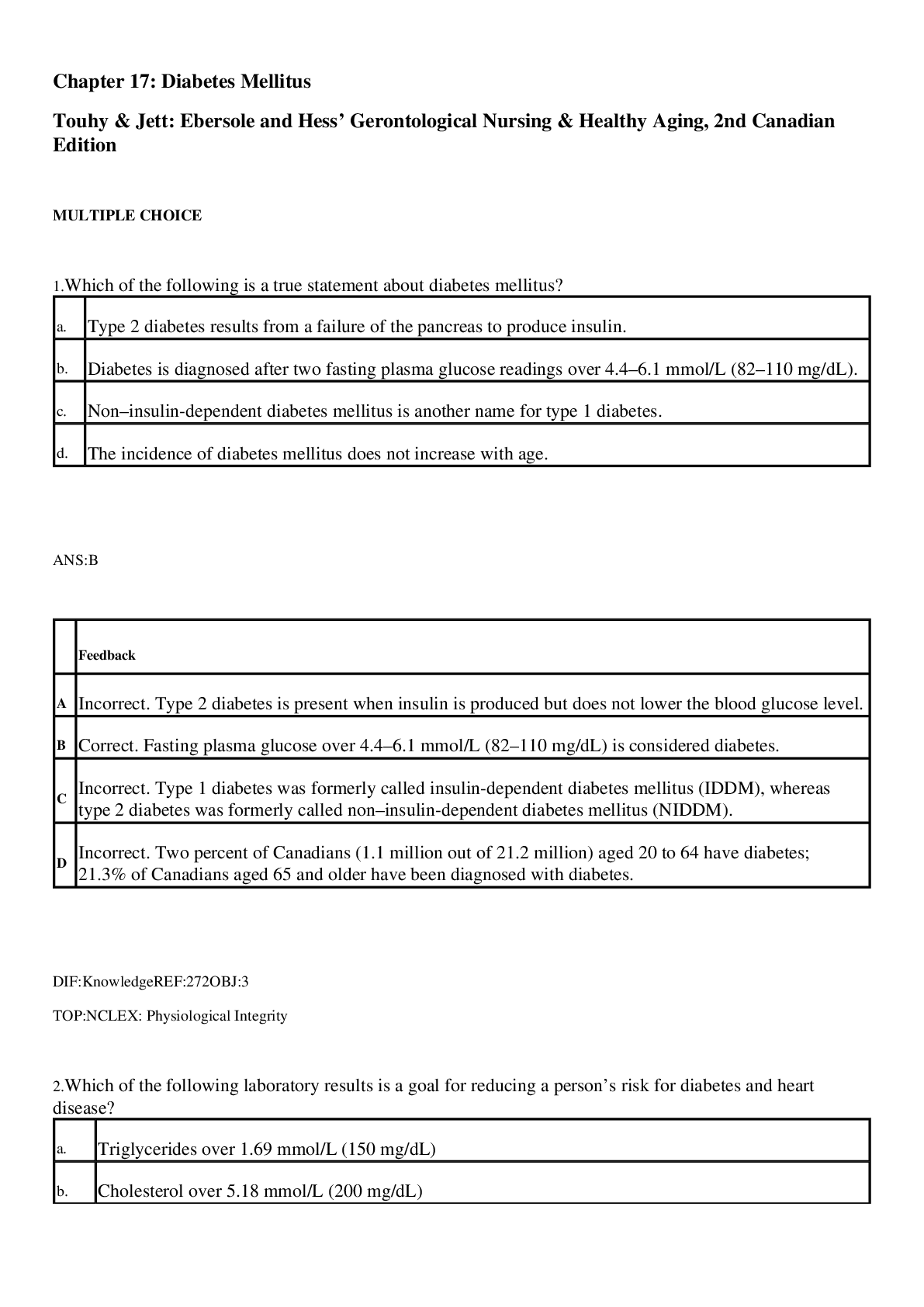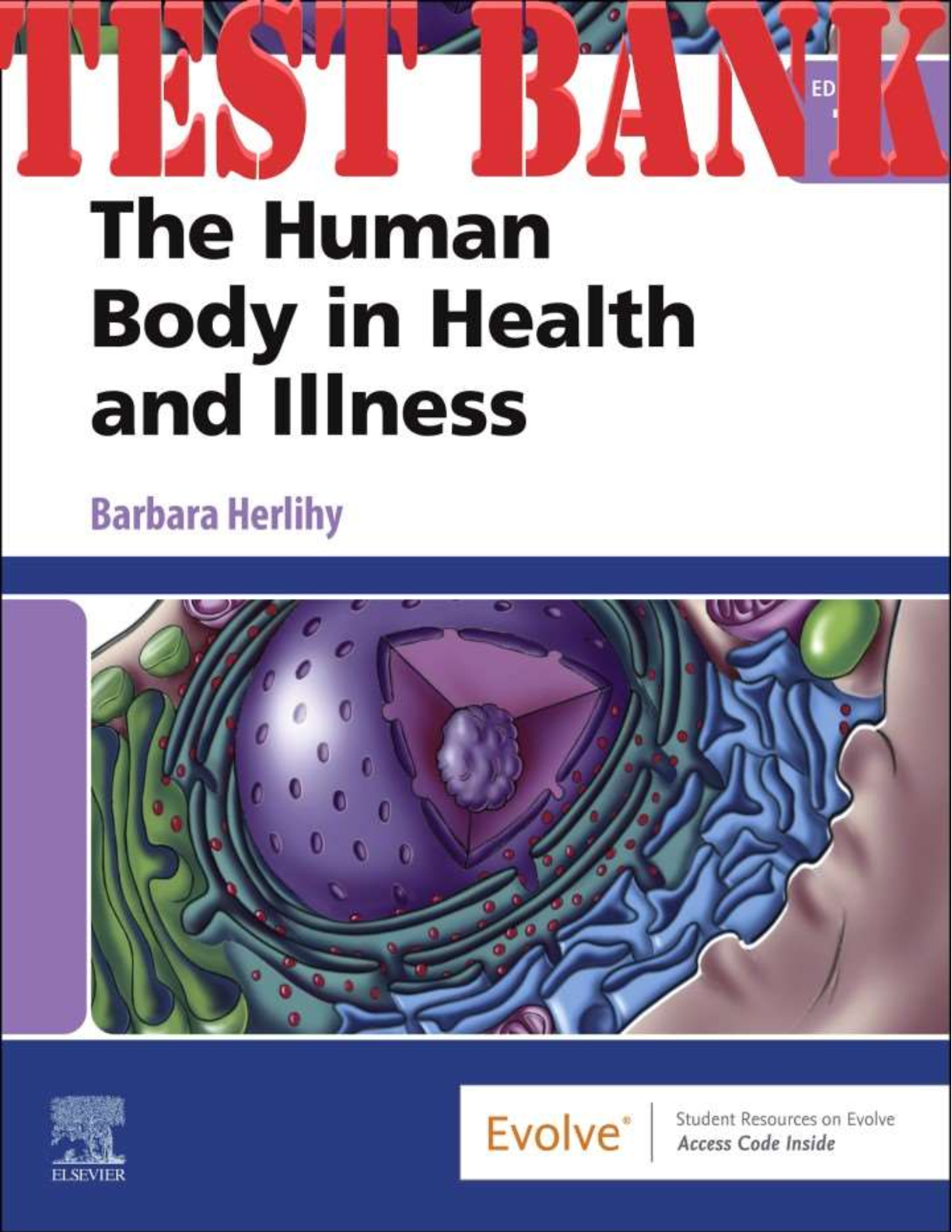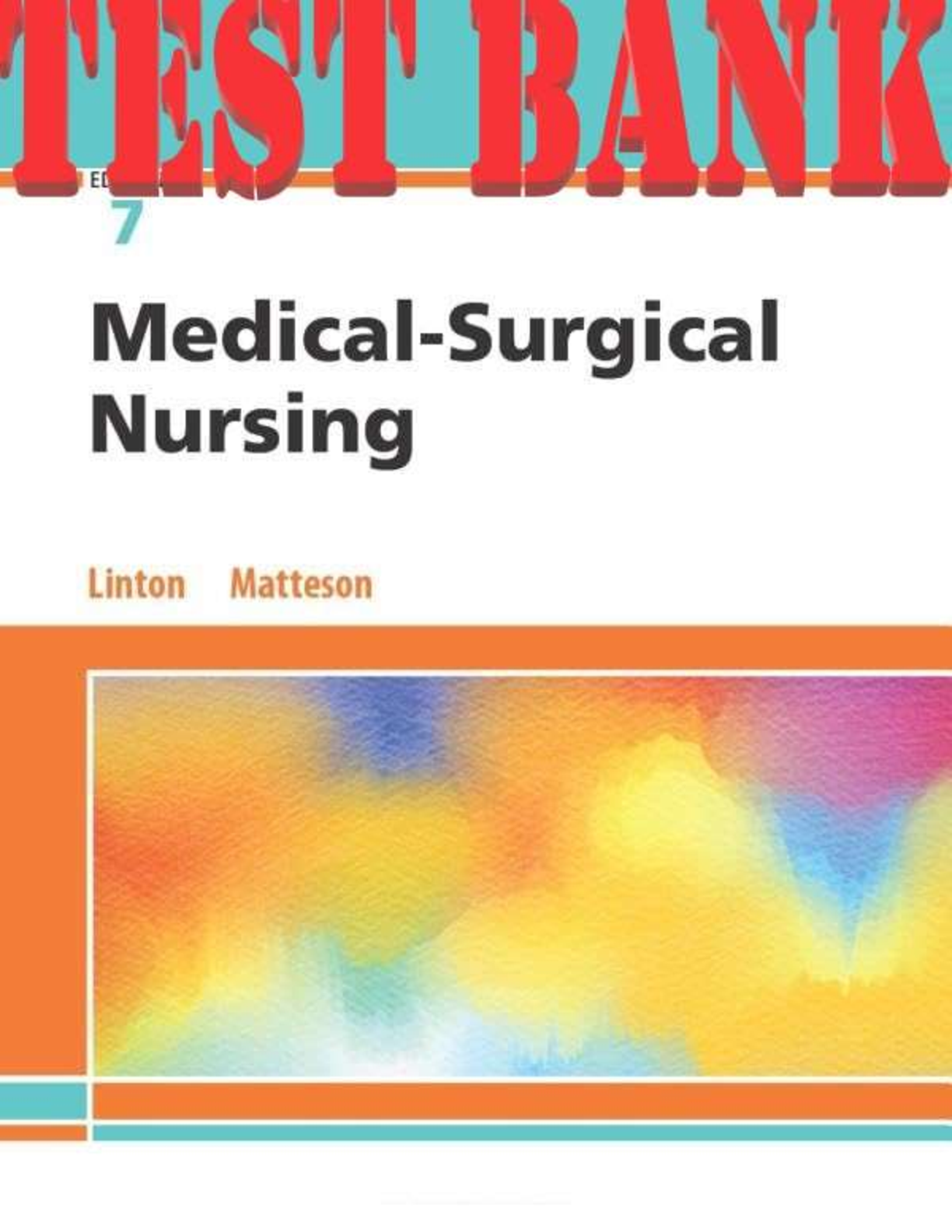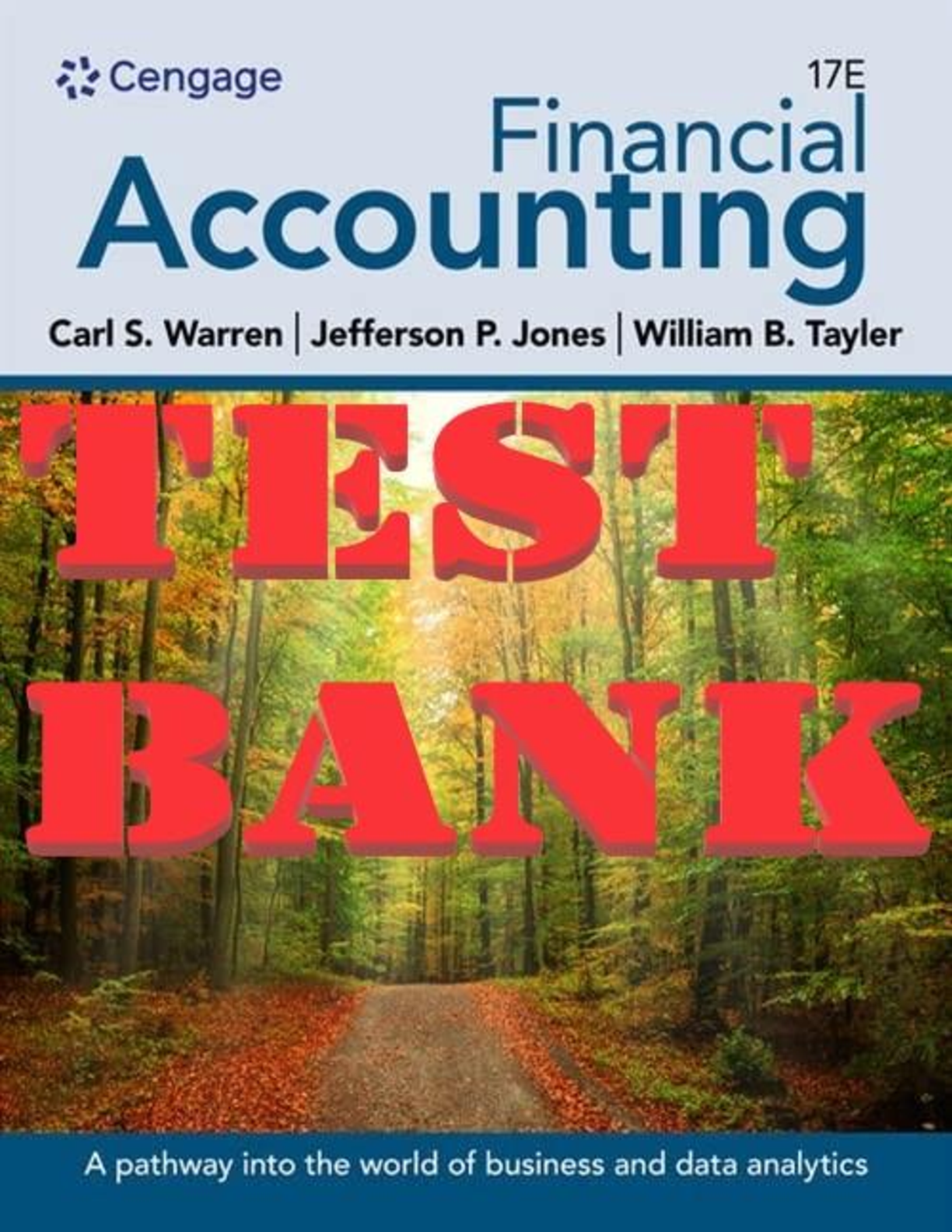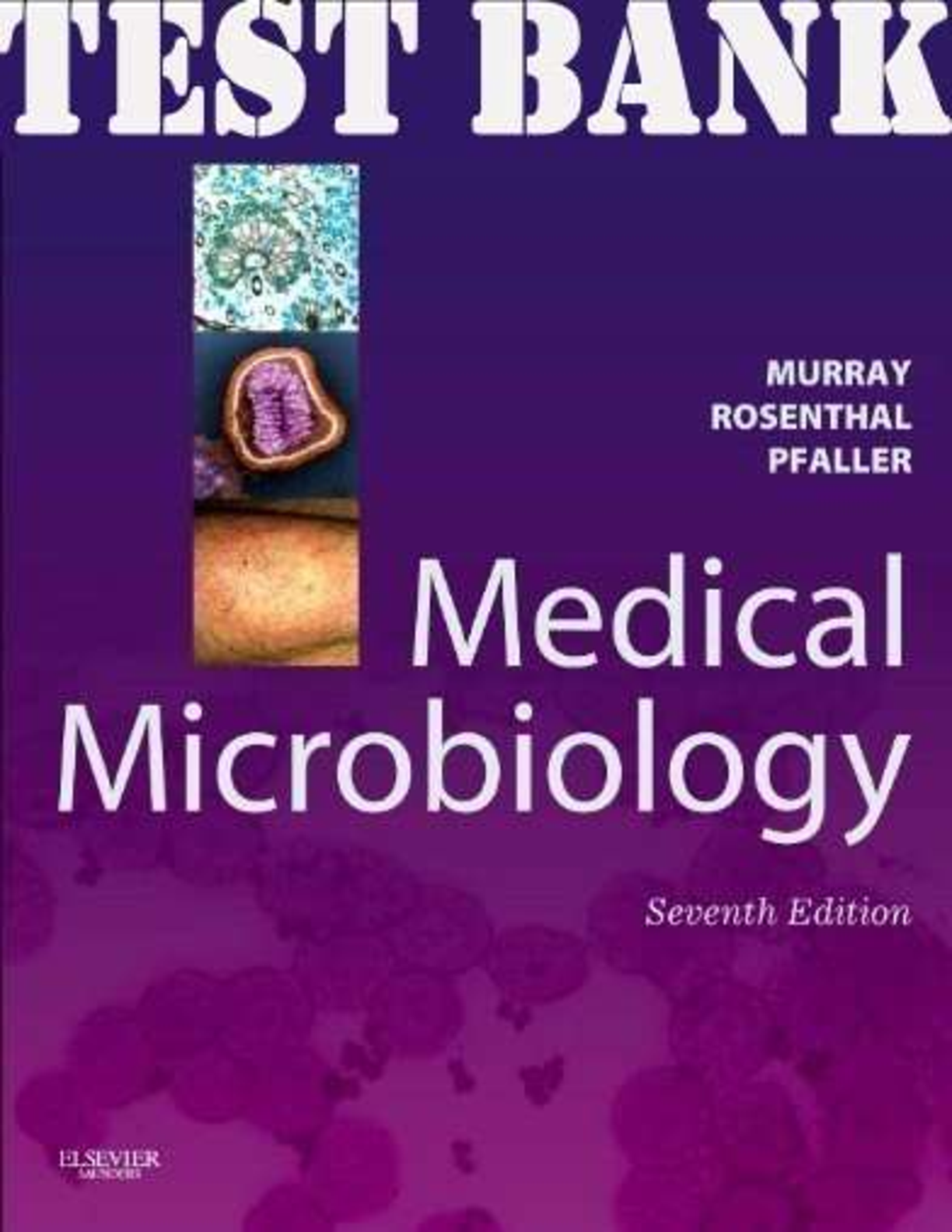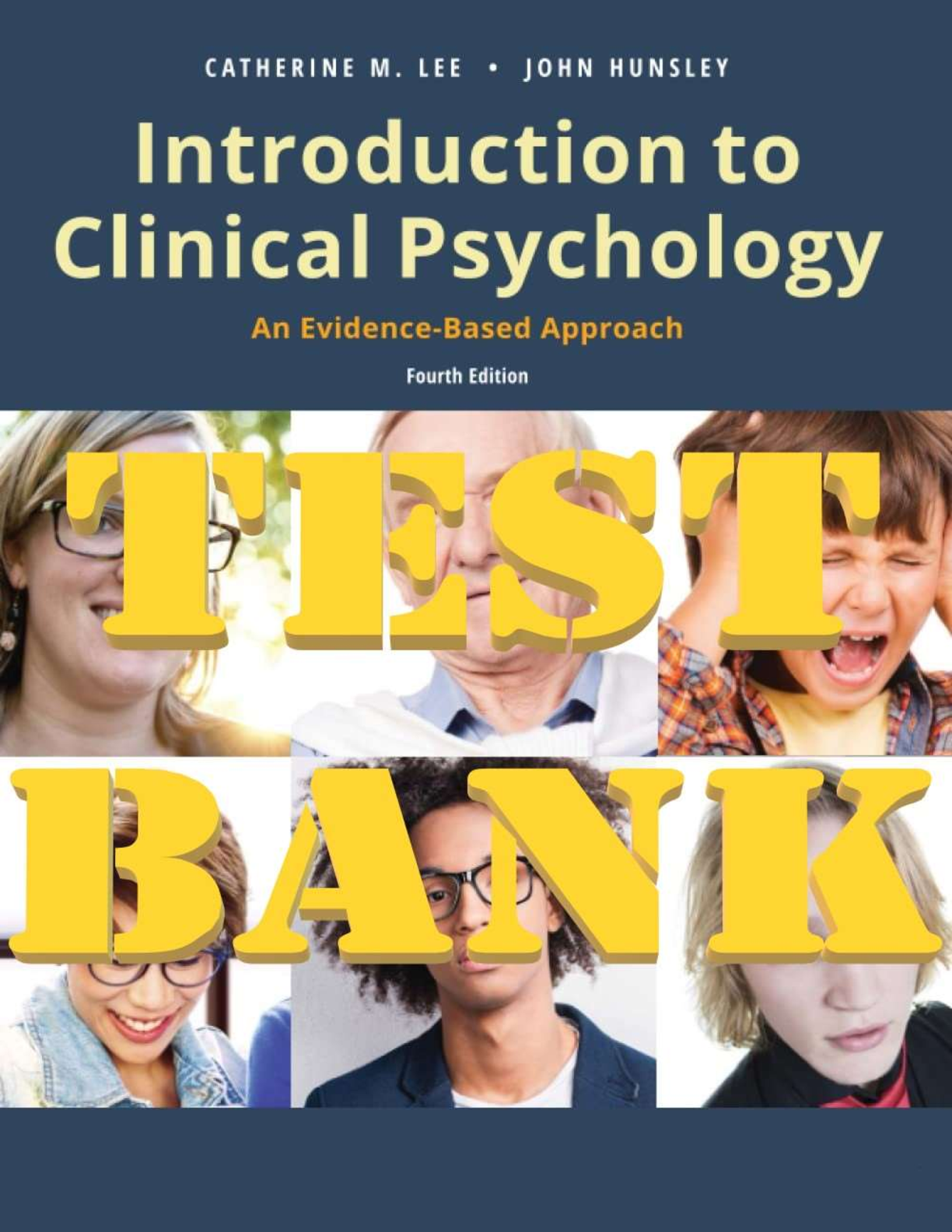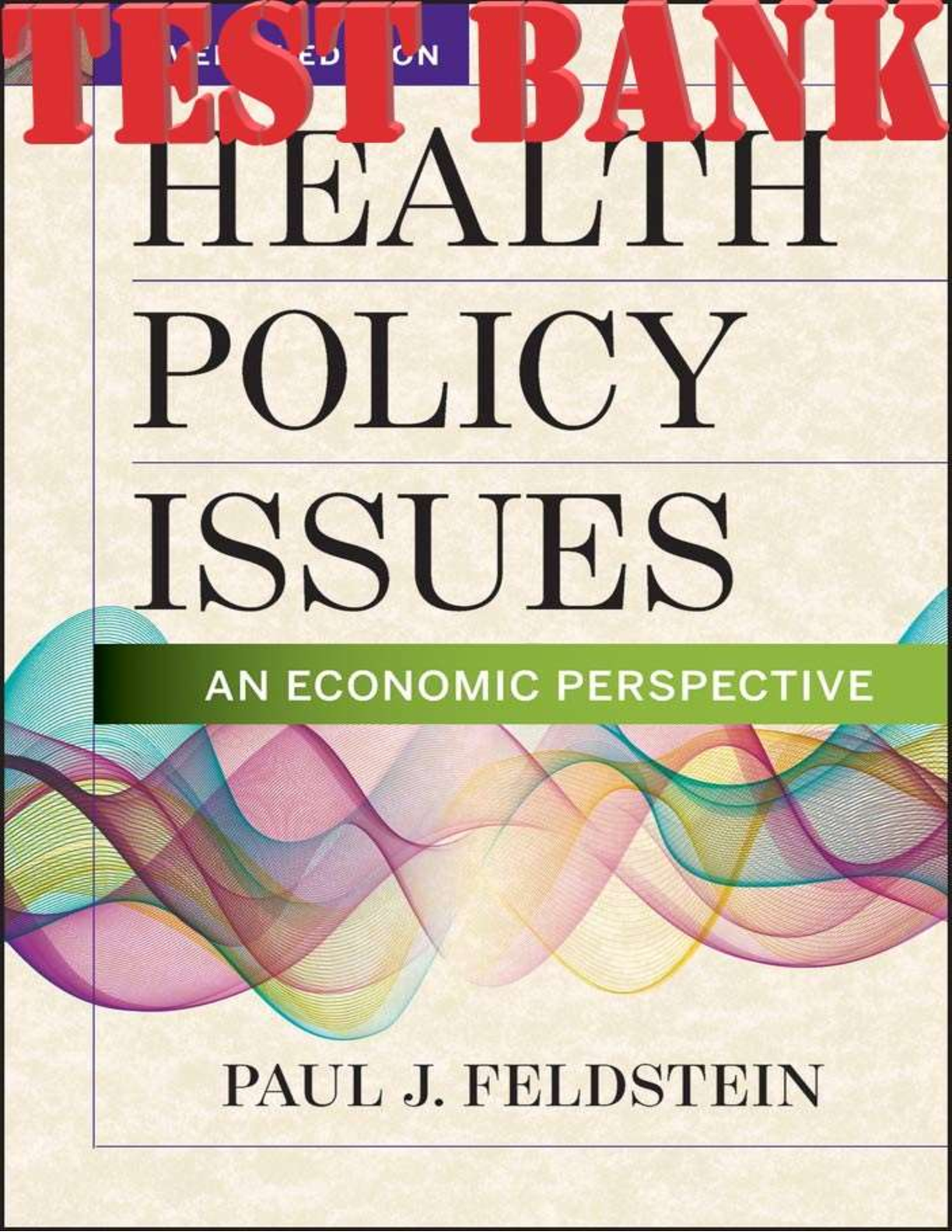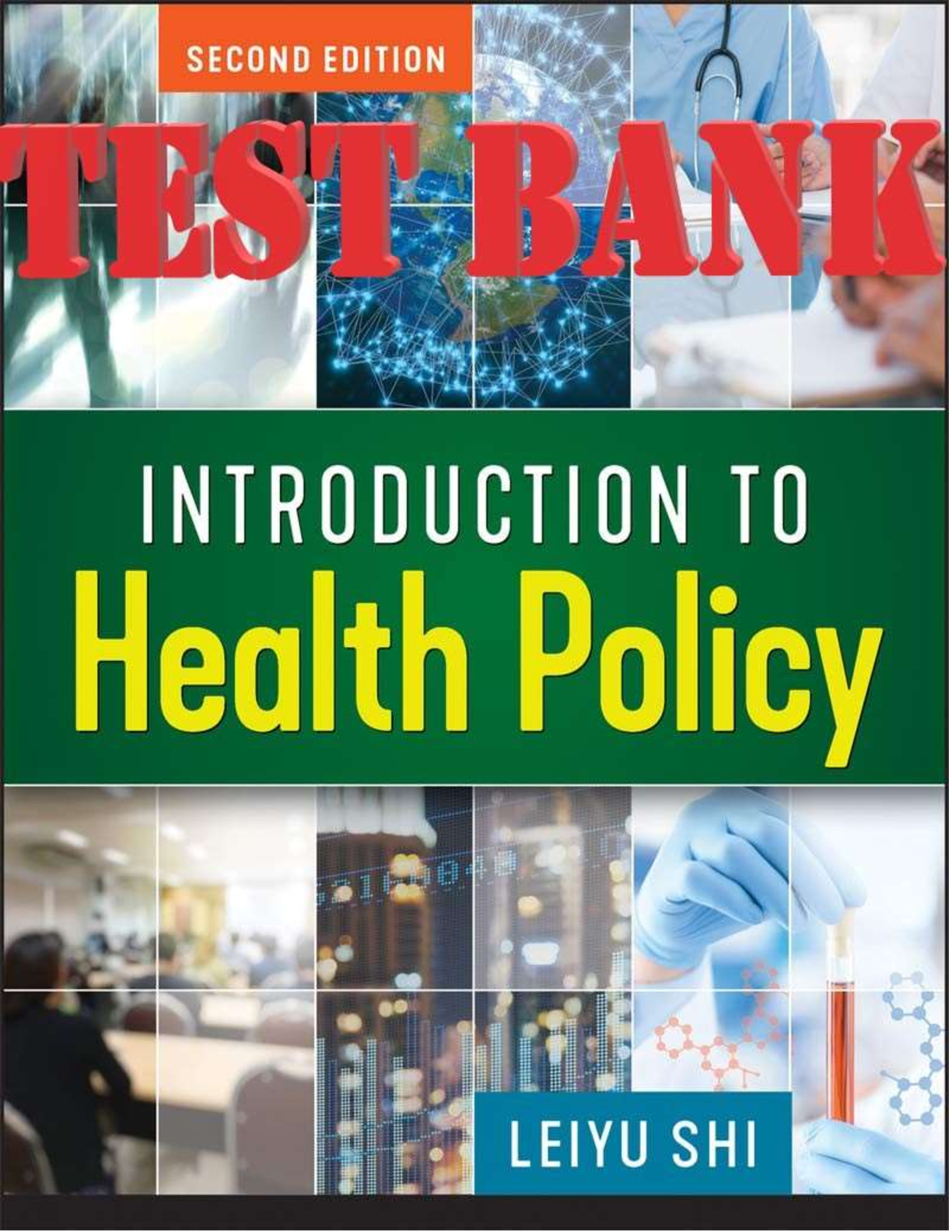*NURSING > TEST BANK > TEST BANK FOR INTRODUCTION TO CRITICAL CARE NURSING 7TH EDITION BY SOLE"Chapter 19: Endocrine Altera (All)
TEST BANK FOR INTRODUCTION TO CRITICAL CARE NURSING 7TH EDITION BY SOLE"Chapter 19: Endocrine Alterations
Document Content and Description Below
MULTIPLE CHOICE 1. A patient with type 1 diabetes who is receiving a continuous subcutaneous insulin infusion via an insulin pump contacts the clinic to report mechanical failure of the infusion p... ump. The nurse instructs the patient to begin monitoring for signs of: a. adrenal insufficiency. b. diabetic ketoacidosis. c. hyperosmolar, hyperglycemic state. d. hypoglycemia. ANS: B If the insulin pump fails, the patient with type 1 diabetes will have a complete interruption of insulin delivery; diabetic ketoacidosis will occur. Adrenal insufficiency would not result from insulin pump failure. Hyperosmolar, hyperglycemic state is a hyperglycemic complication associated with type 2 diabetes; this patient has type 1 diabetes. Interruption of insulin delivery in type 1 diabetes would result in hyperglycemia, not hypoglycemia. DIF: Cognitive Level: Analysis REF: p. 553 | Box 18-4 OBJ: Formulate plans of care for patients with critical alterations in endocrine function. TOP: Nursing Process Step: Intervention MSC: NCLEX: Physiological Integrity 2. Which of the following patients is at the highest risk for hyperosmolar hyperglycemic syndrome? a. An 18-year-old college student with type 1 diabetes who exercises excessively b. A 45-year-old woman with type 1 diabetes who forgets to take her insulin in the morning c. A 75-year-old man with type 2 diabetes and coronary artery disease who has recently started on insulin injections d. An 83-year-old, long-term care resident with type 2 diabetes and advanced Alzheimer’s disease who recently developed influenza ANS: D Hyperosmolar hyperglycemic syndrome is more common in type 2 diabetes; influenza is a stressor that would result in further increases in blood sugar. Some individuals with advanced Alzheimer’s disease cannot communicate thirst needs and may be incontinent, making hypertonic fluid loss more difficult to estimate. Uncontrolled type 1 diabetes is associated with diabetic ketoacidosis. Interruption of insulin delivery related to a missed insulin dose in type 1 diabetes creates a situation of absolute insulin deficiency in type 1 diabetes and is associated with diabetic ketoacidosis. A patient with type 2 diabetes who is new to insulin is at risk for hypoglycemia. DIF: Cognitive Level: Analysis REF: pp. 552-553 OBJ: Describe the pathophysiology and systemic manifestations of disorders resulting from alterations in hormones secreted by the pancreas, adrenal, thyroid, and posterior pituitary glands. TOP: Nursing Process Step: Assessment MSC: NCLEX: Physiological Integrity 3. Which of the following laboratory values would be more common in patients with diabetic ketoacidosis? a. Blood glucose >1000 mg/dL b. Negative ketones in the urine c. Normal anion gap d. pH 7.24 ANS: D A pH of 7.24 is indicative of an acidotic state that may accompany diabetic ketoacidosis. Glucose values of more than 1000 mg/dL are more commonly associated with hyperosmolar hyperglycemic syndrome. Diabetic ketoacidosis is associated with positive urine ketones and an increased anion gap. DIF: Cognitive Level: Comprehension REF: Laboratory Alert: Pancreatic Endocrine Disorders OBJ: Describe the methods for assessing the endocrine system, including physical assessment, and interpretation of laboratory and other diagnostic tests. TOP: Nursing Process Step: Assessment MSC: NCLEX: Physiological Integrity 4. Which of the following is a high-priority nursing diagnosis for both diabetic ketoacidosis and hyperosmolar hyperglycemic syndrome? a. Activity intolerance b. Fluid volume deficient c. Hyperthermia d. Impaired nutrition, more than body requirements ANS: B Both diabetic ketoacidosis and hyperosmolar hyperglycemic syndrome result in dehydration and hypovolemia; therefore, fluid volume deficit is a priority nursing diagnosis. Even though activity intolerance is a potential nursing diagnosis related to the fatigue associated with metabolic changes in hyperglycemic conditions, it is not a first priority. Hyperthermia is associated with thyroid crisis. Although overweight and obesity are risk factors for type 2 diabetes, during metabolic crisis, the patient has inadequate energy available to tissues because of limited availability and poor utilization of insulin. DIF: Cognitive Level: Analysis REF: p. 557 OBJ: Formulate plans of care for patients with critical alterations in endocrine function. TOP: Nursing Process Step: Planning MSC: NCLEX: Safe and Effective Care Environment 5. The nurse is assigned to care for a patient who presented to the emergency department with diabetic ketoacidosis. A continuous insulin intravenous infusion is started, and hourly bedside glucose monitoring is ordered. The targeted blood glucose value after the first hour of therapy is: a. 70 to 120 mg/dL. b. a decrease of 25 to 50 mg/dL compared with admitting values. c. a decrease of 50 to 75 mg/dL compared with admitting values. d. less than 200 mg/dL. [Show More]
Last updated: 1 year ago
Preview 1 out of 22 pages
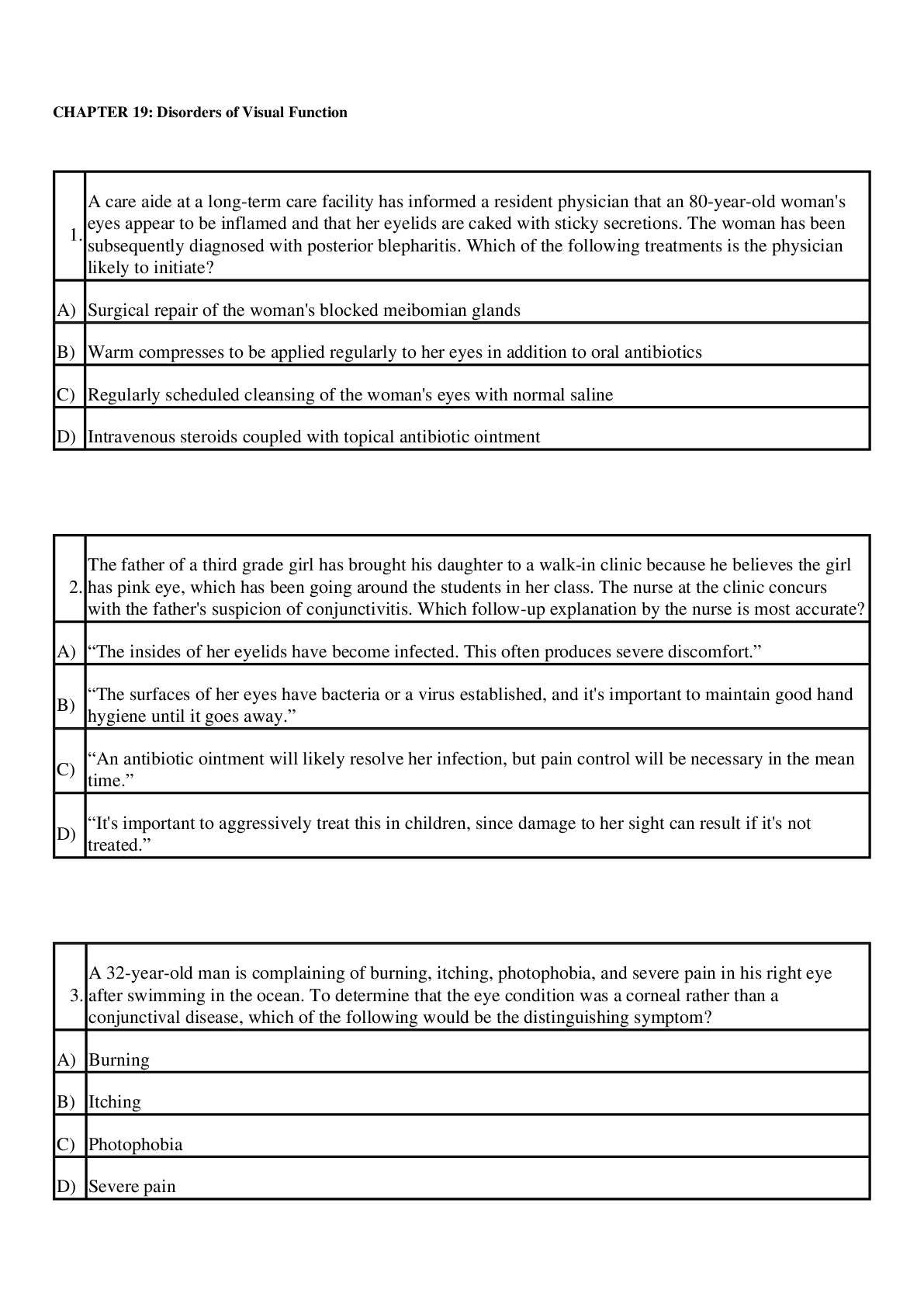
Buy this document to get the full access instantly
Instant Download Access after purchase
Add to cartInstant download
We Accept:

Reviews( 0 )
$4.50
Document information
Connected school, study & course
About the document
Uploaded On
Feb 28, 2021
Number of pages
22
Written in
Additional information
This document has been written for:
Uploaded
Feb 28, 2021
Downloads
0
Views
63



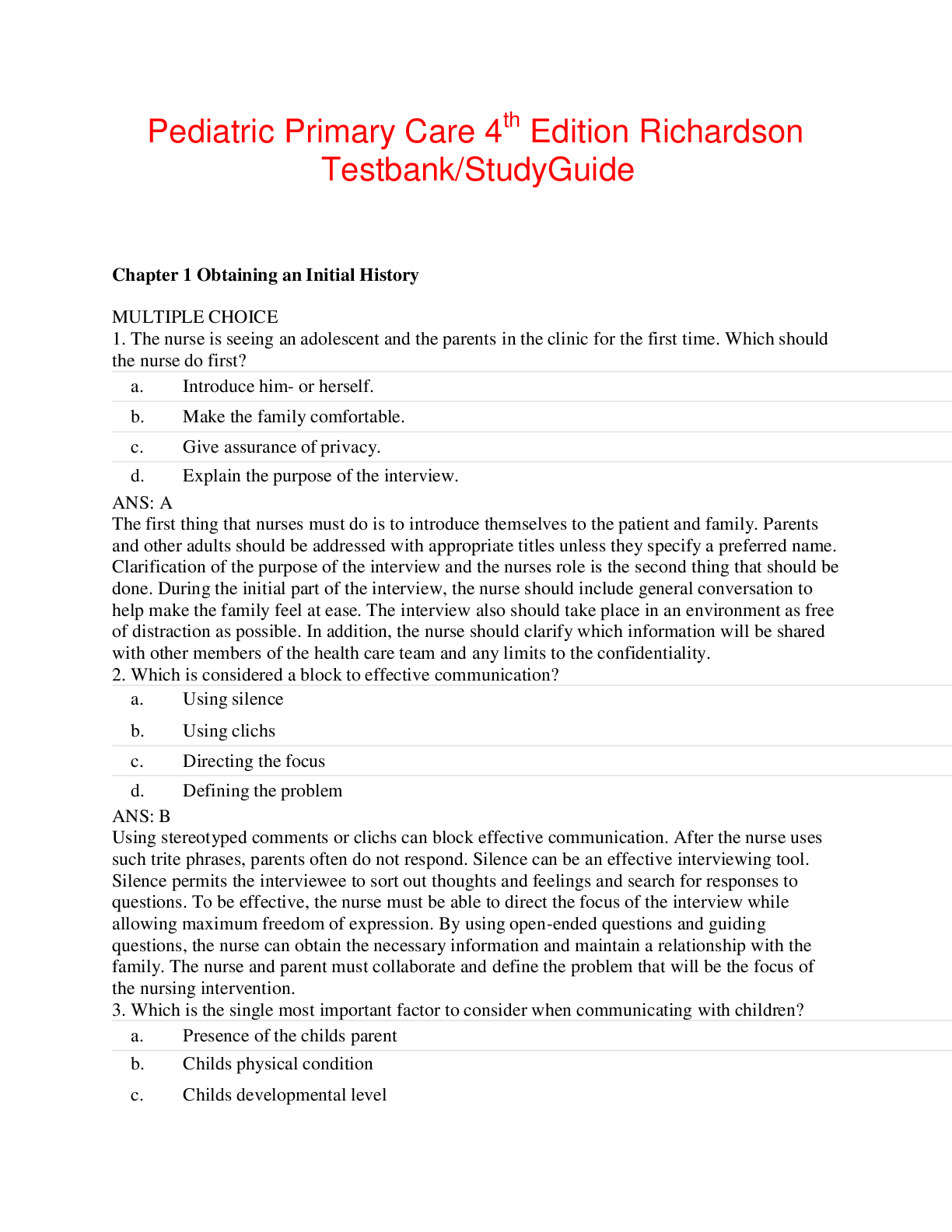

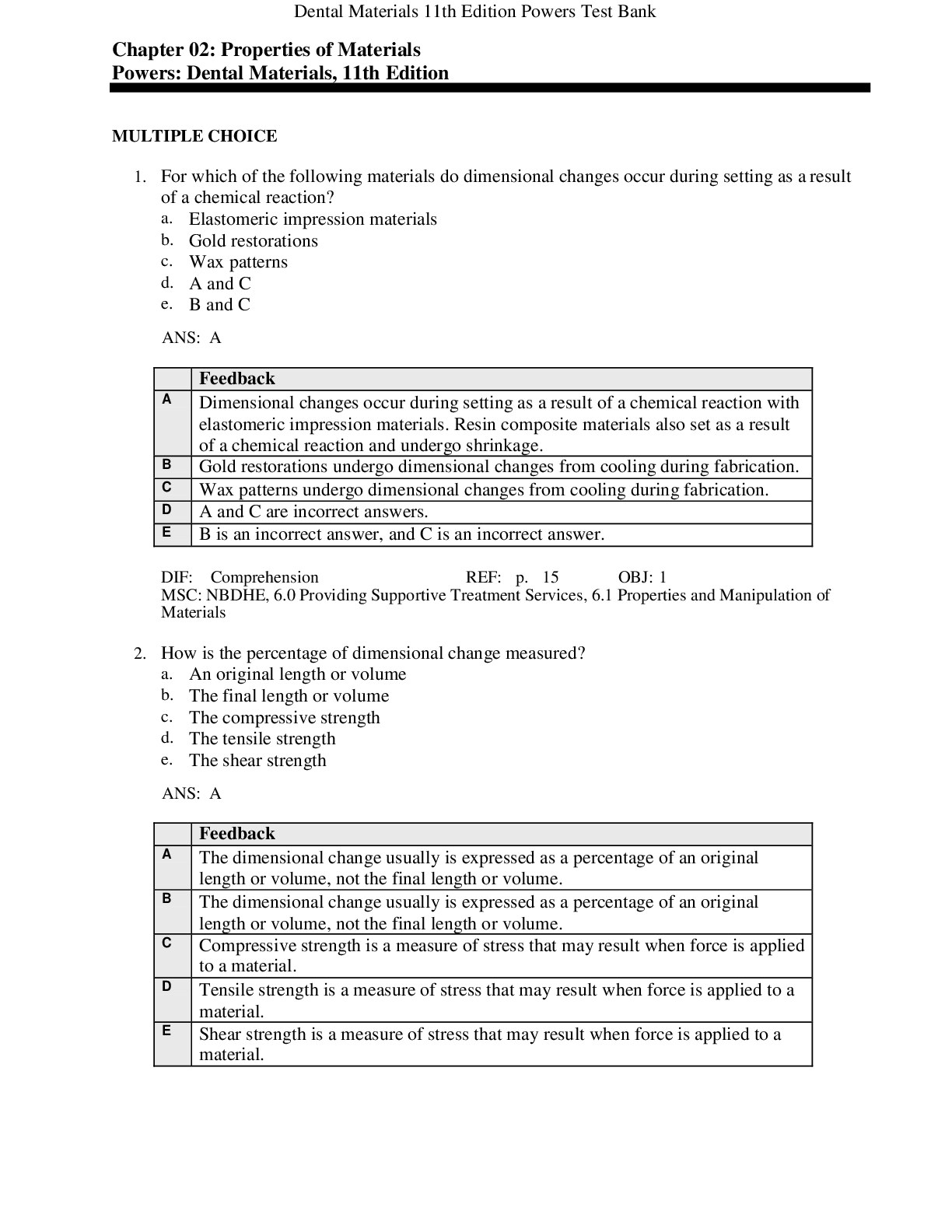
.png)
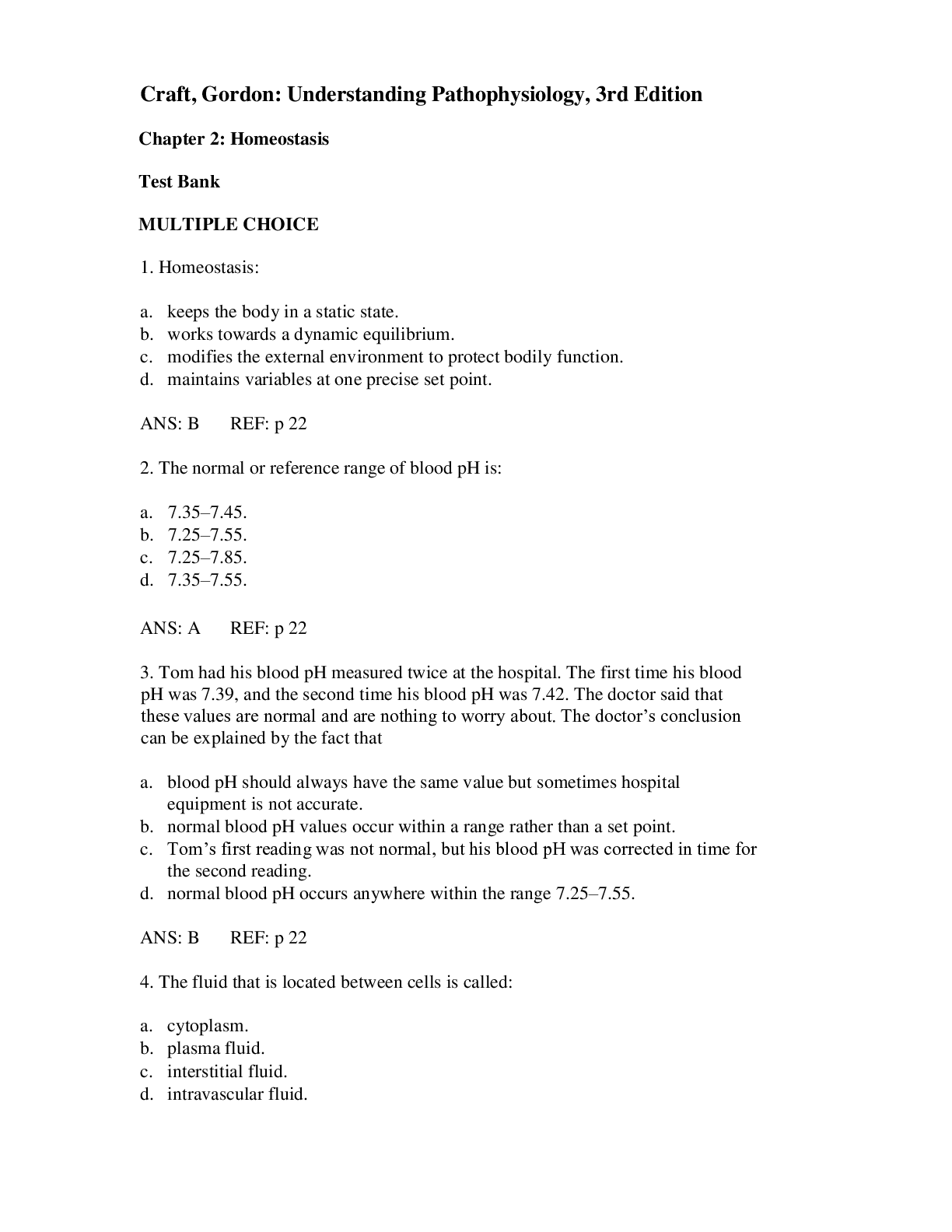



.png)
.png)
